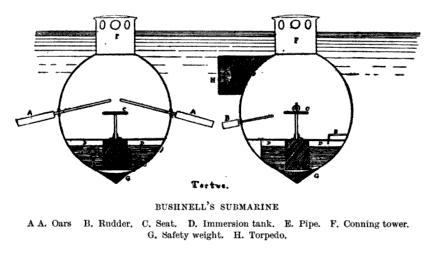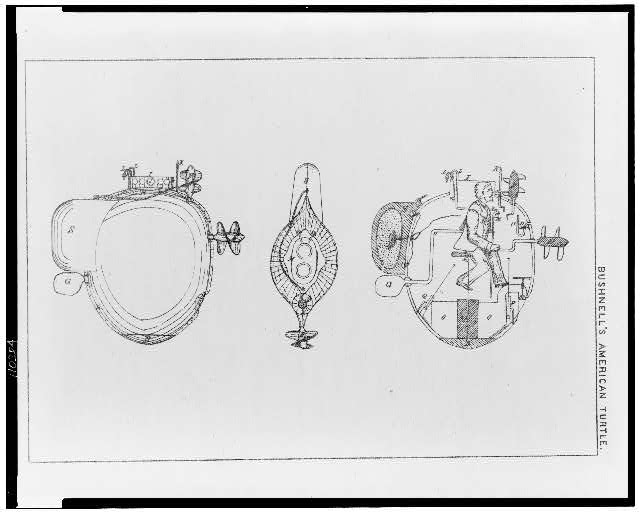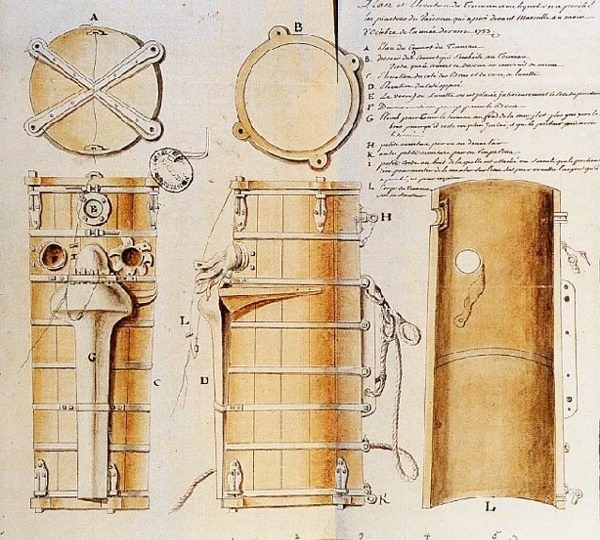General History
Charles Spalding & John Smeaton
In 1775, Charles Spalding introduced changes to Halley’s Diving Bell by creating a system of balance-weights and a separate chamber for air or water to help lower and raise the diving bell. This new concept gave the divers more control and handling over the craft.
In 1788, John Smeaton designed his own diving bell to repair the Hexman Bridge foundation in Northumberland, England. He improved on the air pressure system of the common diving bell created by Denis Papin and Edmund Halley.
“Instead of the usual form of a Bell, or of a conical tub of wood sunk by weights (externally applied), this, for convenience, was a square chest of cast iron, which, being 50 cwt, was heavy enough to sink itself; and, being 4.5 feet in height, 4.5 feet in length, and 3 feet wide, afforded room for two men at a time to work under it. But it was peculiar to this machine that the men therein were supplied with a constant influx of fresh air, without any attention of theirs; that necessary article being amply supplied by a forcing Air Pump, in a boat, upon the water’s surface.” - Historical Report on Ramsgate Harbour, John Smeaton, 1791
"Fig. 94", Diving Scientifically and Practically Considered, Being
a Manual and Handbook of Submarine Appliances, Sir Robert Henry Davis


